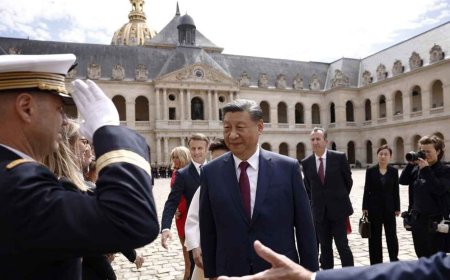Rupee rises 16 paise to close at 85.39 against US dollar
The Indian rupee appreciated 16 paise to close at 85.39 against the US dollar amid a weaker greenback, falling crude oil prices, and strong domestic equities. Analysts suggest RBI intervention and global cues supported the recovery.

The Indian rupee appreciated by 16 paise to settle at 85.39 against the US dollar on Thursday, supported by a weakening greenback globally, declining crude oil prices, and a positive trend in the domestic equity markets. The recovery comes after a volatile start to the week and signals growing confidence among investors ahead of key economic data releases.
Market Context: Dollar Weakens Amid Fed Rate Speculation
The US dollar index, which measures the strength of the greenback against a basket of six major currencies, retreated to 105.17, down 0.3%, as traders reassessed the likelihood of a Federal Reserve rate cut in September following mixed economic data. Slower-than-expected growth in US job additions and dovish comments from some Fed officials have sparked renewed optimism among emerging markets.
“With the dollar showing signs of exhaustion and US yields slightly down, we’re seeing relief rallies in many emerging market currencies, including the rupee,” said Nish Bhatt, Founder & CEO of Millwood Kane International.
Rupee Performance and Forex Interventions
At the interbank foreign exchange market, the rupee opened at 85.52 and witnessed an intraday high of 85.36 and a low of 85.55. It finally settled at 85.39 per dollar, marking a 16-paise gain over Wednesday’s close of 85.55.
Market participants suggest that the Reserve Bank of India (RBI) may have subtly intervened to prevent excessive volatility.
“While the rupee has been under pressure over the last few months due to rising US bond yields and global uncertainty, today’s uptick likely saw some central bank action to curb sharp movements,” said Anindya Banerjee, VP – Currency Derivatives & Interest Rate Derivatives, Kotak Securities.
Crude Oil Prices Ease, Providing Relief
Brent crude futures were last trading near $85.40 per barrel, slipping almost 1.5% after reaching a two-month high earlier in the week. The decline was attributed to a surprise build in US inventories and a cautious demand outlook from Asia. Lower oil prices are a boon for India, the world’s third-largest oil importer, as they help ease trade deficits and inflationary pressures.
“The easing of Brent crude below $86 has given the rupee room to breathe. A sharp fall in oil prices also tempers inflation concerns and is beneficial for India’s macroeconomic position,” said Madhavi Arora, Lead Economist, Emkay Global.
Domestic Equities Continue Uptrend
The buoyant mood in the domestic equity market also lent support to the rupee. The benchmark BSE Sensex rose 355 points to close at 80,245, while the NSE Nifty ended 114 points higher at 24,340, hitting fresh record highs for the second consecutive session. Foreign institutional investors (FIIs) turned net buyers, infusing ₹2,134 crore into Indian equities on Wednesday, as per provisional exchange data.
Investor sentiment remains optimistic, bolstered by easing global inflation, stable interest rate expectations, and robust corporate earnings from India Inc.
Forward Market Outlook
Looking ahead, currency traders will closely monitor upcoming US non-farm payroll data and the Federal Open Market Committee (FOMC) meeting minutes. Domestically, market watchers are eyeing India’s industrial production and inflation figures for further cues.
“The rupee could see a narrow range between 85.20 to 85.70 in the near term unless there’s a major geopolitical event or shift in Fed policy stance,” said Sugandha Sachdeva, Founder, SS WealthStreet.
Investor Outlook: Volatility Likely to Persist
Despite the positive move, analysts caution that the rupee’s longer-term trajectory remains uncertain due to persistent global headwinds, including trade tensions, oil price volatility, and the US elections later this year.
Investors are advised to remain cautious but optimistic. Exporters may look to hedge their receivables, while importers could wait for better levels, given the improving domestic backdrop.
“The rupee’s resilience today is a good sign, but sustainable strength will require consistent FII inflows, softening US yields, and a stable crude outlook,” added Arora.
Thursday’s recovery in the rupee reflects a favorable alignment of domestic and global factors — including declining oil prices, robust stock market performance, and easing concerns over the US rate trajectory. However, with multiple macroeconomic events on the horizon, short-term volatility remains likely.
Currency markets are expected to stay range-bound in the coming sessions, but investors are optimistic that a more stable rupee could support India’s broader economic momentum going into the second half of FY26.
What's Your Reaction?
 Like
0
Like
0
 Dislike
0
Dislike
0
 Love
0
Love
0
 Funny
0
Funny
0
 Angry
0
Angry
0
 Sad
0
Sad
0
 Wow
0
Wow
0













































































